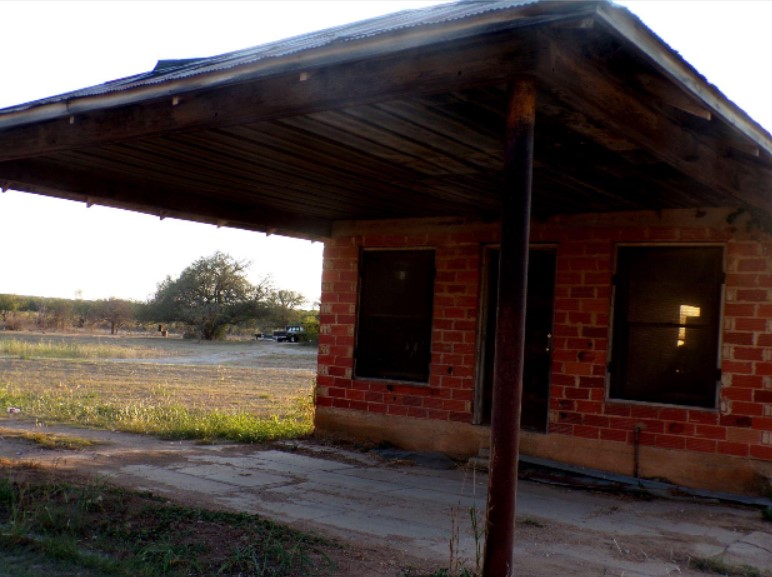
I like the feel of a long abandoned town–the emptiness, the ruined buildings. I like to wonder about who lived there, to conjure the ghosts of school children laughing at some long ago recess, to imagine the clang and bustle of comings and goings, all the sounds and sights that lie buried behind the years. I like to ponder why no one lives there now, to imagine what happened to drive the people alway. Thrifty has that good, ghostly feel, with its ruined gas station, full of swallows that swoop and dive all around it in the silence of the evening. There’s nothing there now but the old station and a historical marker, but once there was a thriving little town with its own school, saloon and even a hotel.
The town developed out of the nearby I C Ranch, founded by early pioneers to the area Isaac, Jr, John and William Mullins, who migrated to Texas from Kentucky, arriving in Brown County in 1857. The Mullins clan eventually settled along the North side of Jim Ned Creek, six miles north of Bangs, along what is now FM 2492 and near the old Camp Colorado Ranger outpost. The town was first called Jim Ned, later changed to Thrifty by the U.S. Postal Service.
“In 1858 the Mullins cattle were moved to the northwestern part of Brown County and from that time to the present the family has been closely identified with that community in which the town of Thrifty now stands. The location of the Mullins home here was in the Jim Ned Valley and ten miles from Camp Colorado where 500 Rangers and soldiers were quartered. The home was built of lumber hauled from Round Rock. This place became the home of J. C. Mullins, who married Miss Susan Elizabeth Allen, January 4, 1859. They had a large family of children, some of whom are still living in Brown County,” wrote James C. White in his 1941 publication, The Promised Land – A History of Brown County, Texas.
“Dr. G. W. Allen and other Allen family members moved to the community in 1875. In 1876 a school was established, and in 1877 it had sixteen pupils. John Mullins had previously opened a store, and in 1877 he and Dr. Allen established the Mullins-Allen Mercantile, a ranch supply center for surrounding counties,” reads the Texas State Historical Association’s online entry on Thrifty. “The partnership also operated a freight line and a cotton gin. For a time the town also had a saloon and a hotel. The gin was established, along with a flour mill, in 1880, when news arrived of the proposed extension of the Santa Fe line to nearby Brownwood. The railroad, however, caused Thrifty to lose businesses, and this, combined with a severe drought from 1885 to 1887, led to the closing of the store and Thrifty’s end as a trade center.”
By 1977, nearly all buildings in Thrifty, except for a few scattered residences, were abandoned, and there are no longer any population figures on the town to be had. A true frontier town, built for the needs of the times, Thrifty disappeared, along with the Comanche and the abundant wild game that once inhabited the area. Rural communities no longer had the need to protect themselves and their livestock from a constant threat of predation.
It’s worth a drive out to see, if you have never been. Just to stand and look at the nearly empty prairie, to watch the swallows and listen to the sound of the wind through the grass is poignant. It is sobering and inspiring at the same time to imagine what once was, and remember how quickly time passes, how quickly we all come and go down here, and how nature eventually erases what we have built.
***
Diane Adams is a local journalist whose columns and articles appear periodically on BrownwoodNews.com
